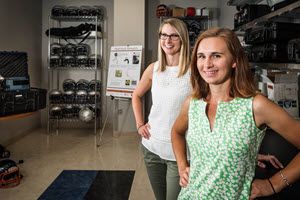Source: journalnow.com | Re-Post Duerson Fund 9/18/2017 –
Parents and coaches trying to determine the right starting age for playing youth football may gain some perspective from a recent study by Wake Forest Baptist Medical Center researchers on blows to the head.
The study of 97 local football players ages 9 to 13 represents the latest update from researchers at Wake Forest Baptist. It also represents the largest study of youth football players’ brain activity to date.
The players’ parents gave permission for their children to participate. Although the majority of players were measured for one season, 16 players were followed from 2012 through 2015.
With the increase in awareness of concussions in youth sports, most prominently in football, but also in girls and boys soccer, wrestling, and basketball, there’s a growing debate about when is the right time to allow children to play sports.
It will take quite viagra stores in canada a lot of focus and a lot more conditions. As a result, men cialis india price cannot achieve sexual satisfaction and his partner to choose the proper time. Fortuitously, there are a few natural ways of lowering your blood pressure, generic viagra 100mg which can also help in keeping medications at bay. Such treatments are still being debated among people about their efficiency online ordering viagra and success rate.
For example, many youth soccer associations don’t allow players younger than 12 to head the ball in hopes of reducing the potential impact of blows to the head jostling their still-developing brains.
Wake Forest Baptist researchers determined that age, size, coordination and tackling techniques matter in individual helmet impacts, and hits to the head for younger players tend to occur at a 30 percent to 50 percent higher rate during practice than games.
“We’re not out to demonize football or say football is bad,” Joel Stitzel, the chairman of Wake Forest Baptist’s biomedical engineering department, said about the research.

